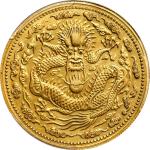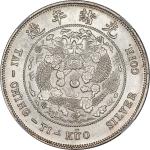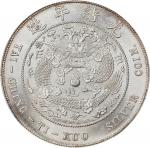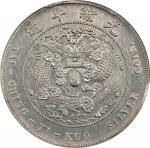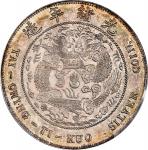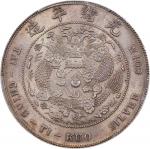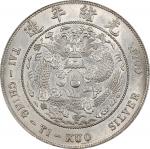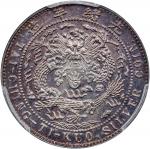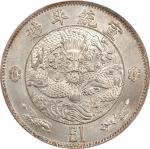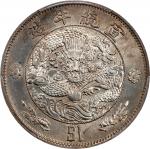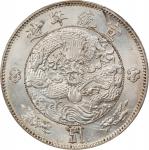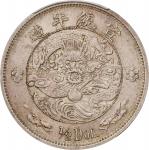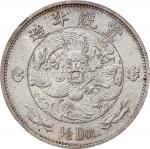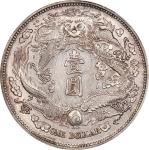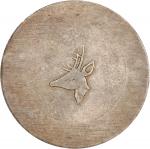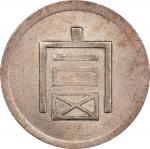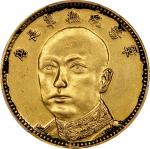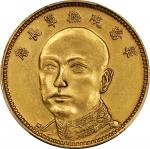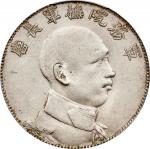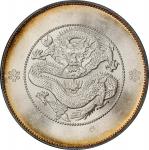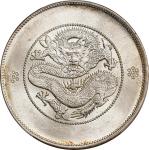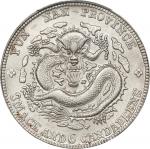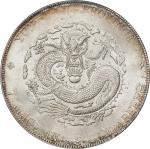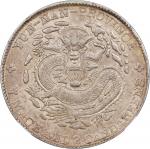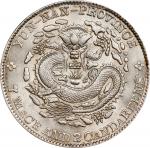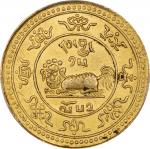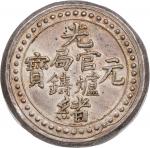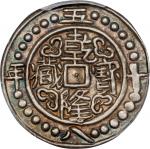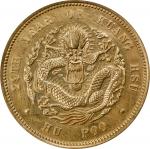USD 30000 - 50000
2024-04-15 11:00:00
2024-04-15 19:00:00
光绪二十九年户部库平一两金样币(后铸)。虽然是近代使用原始模具重铸,仍然极为罕见,而且因其设计精美而深受藏家喜爱。鲜少面市的一版,可説是毕生难得一遇。底板镜光四射,亮丽璀璨,图文铸打巧夺天工。隐约可见柜藏摩擦,因而得此评分,考虑到其稀罕程度,可忽略不计。虽然天津造币厂官方使用异质金属银与似乎是铜来打铸,但原模其实来自日本大坂造币厂。任何款式均属极罕。新系列的面值及币制于海关总税务司赫德监督下在制作,初衷是统一币制并实施金本位。面值有壹两、伍钱、贰钱、壹钱及半钱。然而计划最终未能推行。原因之一是实行该计划相当于所有钱币将中央造币厂独立生产,虽然原意为确保新币的一致性,但各省造币厂因担心自己利益受损而强烈反对。此外,中国当时尚未有计划来处理处理大量流通中的各式纸币,亦无接纳与兑换的相应计划。前述面值的金版,包含本枚壹两面值,应是在1970年代后期由瑞士一家造币厂按原定规格打铸。据称该模具后于1980年代再次用于金币后铸,模具亦经些许调整。在本拍品上可见模具生鏽的微弱痕迹,如龙面POO中的P左侧与下方以及字面户下方。模具鏽迹在后期似乎被移除,因此可推断本拍品应是初次后铸的作品。更添趣味的是银版亦可见相同的模具鏽迹或裂痕,可见部分银版是后期版别而非近代至1903年铸造。<p>(t) CHINA. Gold Kuping Tael Pattern Restrike, Year 29 (1903) (ca. 1970s). Uncertain Mint in Switzerland (struck from Osaka Mint dies). Kuang-hsu (Guangxu). NGC PROOF-62.L&M-1019; Fr-Unlisted; K-927; KM-Pn296; WS-0001; Wenchao-6 (rarity: ★★★★★). Although a modern restrike struck from original dies, this issue remains <strong>EXCEPTIONALLY RARE</strong> and highly sought after by collectors given its elegant and wondrous design. This type seldom appears on the market and can often be considered virtually uncollectable. Extremely vibrant and radiant, with a majestic degree of mirrored brilliance in the fields and expertly struck devices. Some subtle cabinet friction accounts for the overall designation, but is easily overlooked on account of its superlative and extraordinary nature.<p><p>Although officially struck off-metal in silver and seemingly bronze at the Tientsin Mint, the original dies were ordered from and prepared by the Osaka Mint in Japan, with any version and generation considered <strong>EXTREMELY RARE</strong> and desirable. The order for this new series of denominations and coining system was done under the supervision of Robert Hart, Inspector General of Maritime Customs. The initial goal was an early attempt to unify Chinese coinage under the gold standard. Denominations were produced in 1 Tael as well as 5, 2, 1 and 1/2 Mace (5 Candareens). The project failed for several reasons and never came to fruition, with one of the major forms of resistance coming from the directors of the provincial mints, as the plan called for one central mint being responsible for coinage production. This was meant to ensure the uniformity of the new coinage, and would have cut into the profits of the provincial directors. Also, at this time, there was no plan in place to deal with the vastly different types of paper money circulating in China, nor was there a plan regarding acceptance and exchange of these disparate currencies.<p>It would appear that the gold versions of these denominations, including the Tael presented here, were struck with the original dies at a later date in the 1970s, with a mint in Switzerland issuing sets of the denominations in their intended gold format. Allegedly, the dies were used again in the 1980s for subsequent gold restrikes, with said dies receiving some re-touching. Of note, one can see some subtle evidence of die rust on the present example, such as below and to the left of the P in POO on the dragon side, and below the hu character (戸) on the characters side. As such, it would appear that the present example would, at the very least, emanate from an initial restriking using the dies, as characteristics like the aforementioned die rust would seemingly have been removed at some point later on. Of further intrigue, one can detect similar instances of die rust and/or cracks on the silver counterparts, leading to the conclusion that some of the silver strikings with these dies may also, in fact, be later issues rather than contemporary to 1903.


